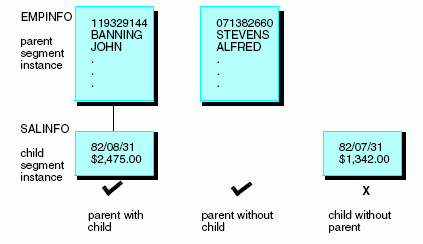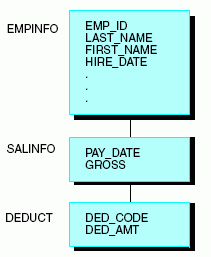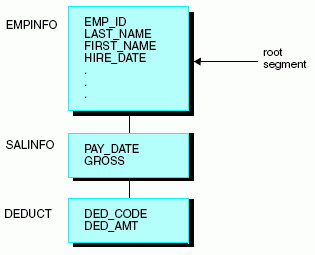A Simple Parent-Child Relationship
In the EMPLOYEE data source, the EMPINFO and SALINFO segments are related. EMPINFO identifies an employee by ID number, while SALINFO contains the pay history of the employee. EMPINFO is the parent segment, and SALINFO is a child segment dependent upon it. It is possible to have in this relationship an employee identified by ID and name for whom no salary information has been entered (that is, the parent instance without the child instance). However, it is meaningless to have salary information for an employee if one does not know who the employee is (that is, a child instance without the parent instance).
The following diagram illustrates the concept of a parent-child relationship.




